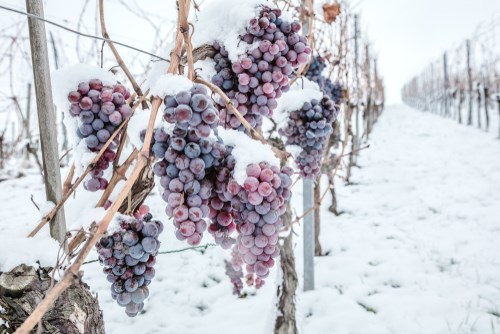
Many wineries made the decision to harvest their grapes for table wine, rather than netting them for icewine, says councillor and grape-grower Erwin Wiens.
The market for the expensive, sweet dessert wine has declined, as COVID impacted international markets and other avenues for icewine sales, while consumption for table wines has increased, especially in the $10 to $20 range, says Wiens.
The icewine harvest will likely be decreased by up to 70 per cent, he says, although the actual grape harvest will be the same as other years, “although for different products. Vidal, cabernet, riesling, all grapes that would be used for icewine, would have been picked in the fresh market season. The decision was made early in the season not to net, and to pick instead for regular table wines.”
While wineries may be selling more of less expensive products, those wines are also cheaper to produce, he explains.
“The cost of making icewine is way more expensive, with netting, harvesting and pressing, all more time consuming. Plus a tonne of grapes can make 850 litres of regular wine, while a tonne of grapes will make only 200 litres of icewine.”
Most years, about 6,000 tonnes of grapes are grown across the province for icewine, he says. This year it’s down to about 1,000 tonnes, says Wiens.
With the drop in tourists who would typically buy the product, and the reduction in outlets selling it, most wineries likely have a good supply left over from previous harvests.
Andrew Niven, director of marketing for Konzelmann Estate Winery, says they are going forward with their icewine grape harvest, watching for the temperature to drop, which would typically occur around this time of year.
The market for the product has been shrinking, with the lack of tourism and “complicated” shipping to international markets, but the winery is still selling it onsite, he says.
“We’re trying to look at the positives, really focusing on giving the guests who come to the winery a great experience,” says Niven. “That includes table wines, icewine and mulled wine.”
The winery is building a dome on the outdoor observation desk, to allow for safe tastings outside. It’s also focusing on the individual guest experience for the icewine trail, as are other wineries.
“The Icewine Festival has been 25 years in the making. We’re just doing it differently this year. We’re concentrating on opening in a safe manner, and we’re not marketing in Toronto. We’ve increased complementary shipping, concentrating on local areas, and using all safety protocols on site, going by all regional and provincial guidelines as we’ve done since reopening in May, and there has been no transmission of COVID that I’m aware of.”
Dave Mines, the manager of grower relations and grape supply for Andrew Peller, agrees that there will be a much smaller crop of frozen grapes harvested for 2021 icewine production.
He estimates only about 500 to 1,000 tonnes of grapes remain to be harvested, grapes they didn’t sell in the regular season.
At Andrew Peller, they would typically harvest between 1,000 to 1,200 tonnes a year for icewine, but this year, they’re looking at about 50 tonnes.
There are several factors that went into the decision, he says, including the decline in travel for Asian tourists due to COVID. “A lot of wineries are in the same boat. There just hasn’t been the traffic,” he says.
But Peller wants to have a 2020 vintage, even if it’s smaller than other years.
He’s hoping for a good cold spell soon to the the grapes harvested before dehydration and hungry birds have a significant impact on the crop.
Greg Berti, the vice-president of global markets for Andrew Peller, says wine consumption is down in restaurants and retailers which are suffering from closures during COVID, but local wineries are doing well through online sales.
“More grapes than ever” are producing wines people want to drink, “but not so much the expensive wines,” he says.
Another change is the increasing popularity of larger boxes, one and four-litres, around the world.
Icewine marketing opportunities have decreased sales, with restaurants and retailers, duty-free shops closed, fewer people passing through airports and cruise ship tours cancelled, all places where icewine is a popular item.
But the product itself has been growing in popularity. “That hadn’t changed, until COVID put a stop to it,” says Berti.
“There is less demand for icewine, but the good news is online sales are going up, and the grapes are being used for value-priced wines. Growers are finding a home for all their grapes.”
The other good news he sees is that many of those who are purchasing icewine are in the 20 to 30 age group, and have no problem paying $70 to $80 a bottle.
“That tells me the younger generations have grasped the magic of icewine, and there will continue to be a market for it in the future.”